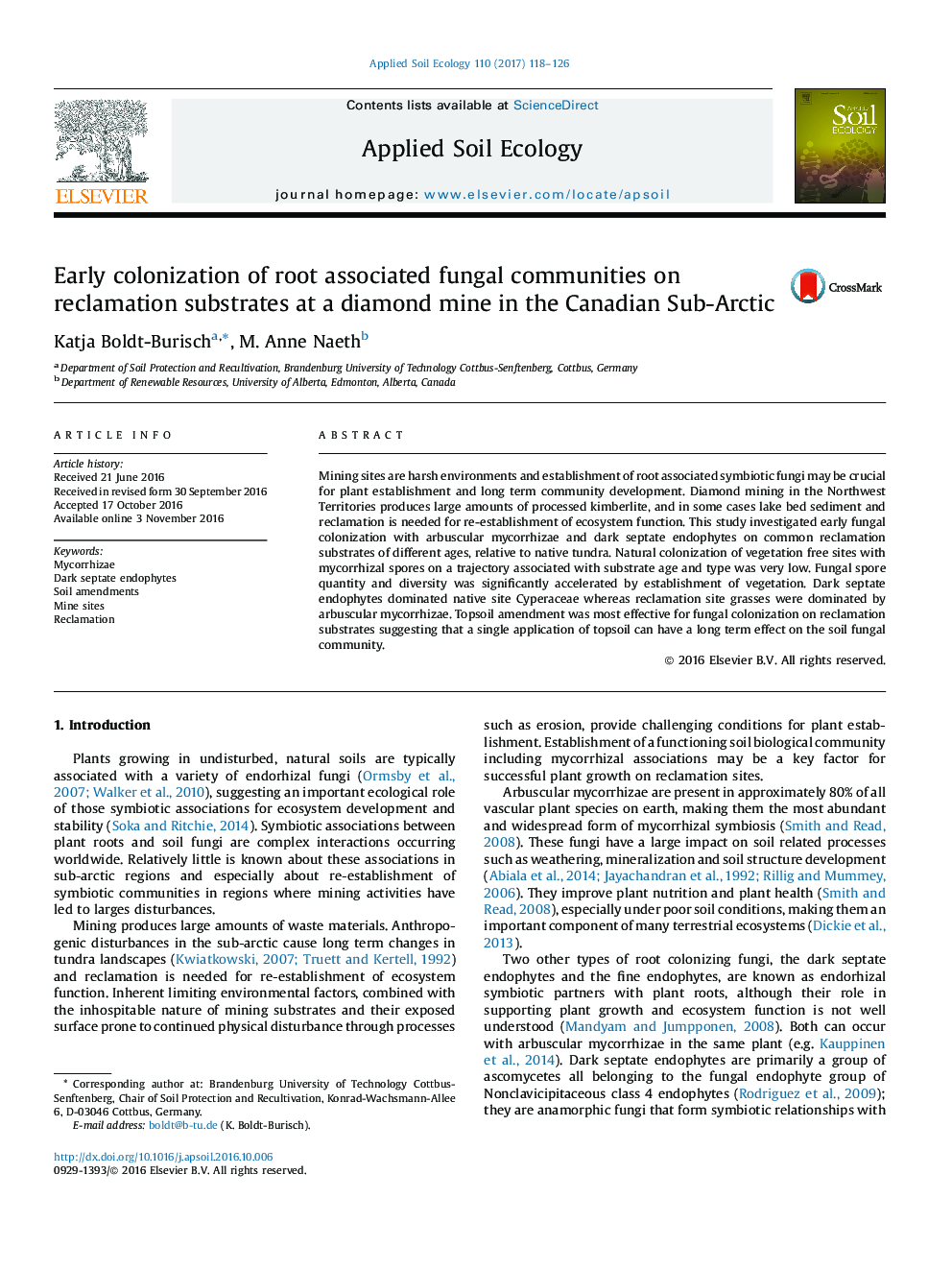| کد مقاله | کد نشریه | سال انتشار | مقاله انگلیسی | نسخه تمام متن |
|---|---|---|---|---|
| 5742779 | 1617773 | 2017 | 9 صفحه PDF | دانلود رایگان |
- Fungal spores naturally invaded reclamation sites over time.
- Dominant occurrence of dark septate endophytes on native sites.
- Dominating root colonization with arbuscular mycorrhizae on reclamation sites.
- More root colonizing fungi on lake bed sediment than on processed kimberlite.
- Topsoil on lake bed sediment significantly enhance root colonizing fungi quantity.
Mining sites are harsh environments and establishment of root associated symbiotic fungi may be crucial for plant establishment and long term community development. Diamond mining in the Northwest Territories produces large amounts of processed kimberlite, and in some cases lake bed sediment and reclamation is needed for re-establishment of ecosystem function. This study investigated early fungal colonization with arbuscular mycorrhizae and dark septate endophytes on common reclamation substrates of different ages, relative to native tundra. Natural colonization of vegetation free sites with mycorrhizal spores on a trajectory associated with substrate age and type was very low. Fungal spore quantity and diversity was significantly accelerated by establishment of vegetation. Dark septate endophytes dominated native site Cyperaceae whereas reclamation site grasses were dominated by arbuscular mycorrhizae. Topsoil amendment was most effective for fungal colonization on reclamation substrates suggesting that a single application of topsoil can have a long term effect on the soil fungal community.
Journal: Applied Soil Ecology - Volume 110, February 2017, Pages 118-126
